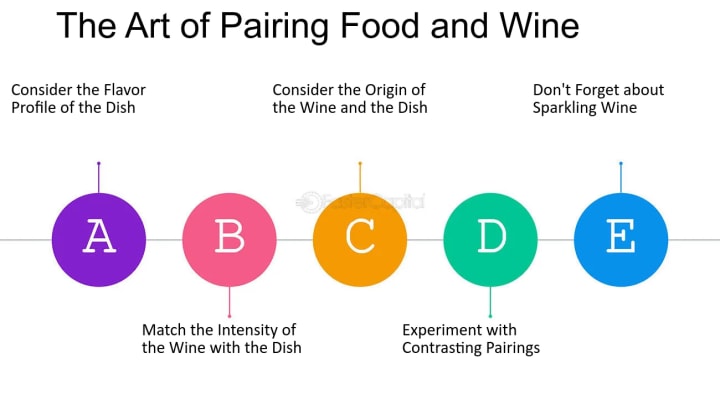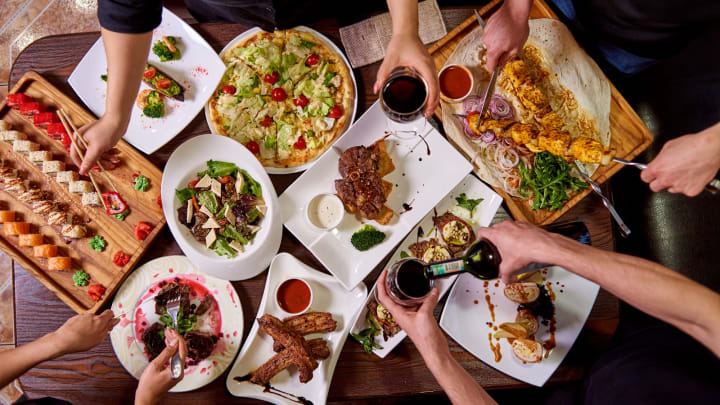The Science Behind Flavor Pairing: Unusual Food Combinations That Work
Food, beyond mere sustenance, is an intricate symphony of flavors, textures, and aromas. Exploring the art of flavor pairing can lead to culinary discoveries that tantalize the taste buds and elevate the dining experience to new heights. While some flavor combinations may seem unconventional at first glance, they often work harmoniously together, creating unexpected and delightful culinary sensations. In this article, we'll delve into the science behind flavor pairing, uncovering the secrets behind unusual food combinations that defy expectations and inspire culinary creativity.
1. Understanding Flavor Profiles:

At the heart of flavor pairing lies an understanding of flavor profiles—the unique characteristics that define the taste of individual ingredients. These flavor profiles can be broken down into five primary categories: sweet, sour, salty, bitter, and umami. By identifying the dominant flavors in each ingredient, chefs and food enthusiasts can create balanced and harmonious flavor combinations that stimulate the palate.
Real-Life Example: Chef Julia Child famously paired buttery, rich lobster with sweet, tangy tarragon in her classic Lobster Thermidor recipe. The sweetness of the lobster complements the herbal notes of the tarragon, resulting in a dish that is both elegant and indulgent.
2. Embracing Contrasting and Complementary Flavors:

Contrary to popular belief, flavor pairing doesn't always require ingredients with similar flavor profiles. In fact, some of the most memorable culinary creations arise from the juxtaposition of contrasting flavors. For example, the sharp acidity of citrus fruits can balance the richness of fatty meats, while the heat of spicy peppers can enhance the sweetness of tropical fruits.
Real-Life Example: Chef Heston Blumenthal's iconic bacon and chocolate combination is a prime example of contrasting flavors working in harmony. The salty, smoky flavor of bacon complements the sweetness of chocolate, creating a decadent and irresistible treat.
3. Exploring Cultural and Regional Pairings:

Cultural and regional influences play a significant role in shaping flavor pairings, as they reflect the unique culinary traditions and preferences of different communities. What may seem unusual in one culture could be considered a delicacy in another. By exploring diverse cuisines and culinary traditions, food enthusiasts can discover new and exciting flavor combinations that challenge their preconceptions and expand their culinary horizons.
Real-Life Example: In Japanese cuisine, the combination of soy sauce and butter may seem unconventional to Western palates. However, the rich, savory umami flavor of soy sauce pairs beautifully with the creamy richness of butter, creating a sauce that is both complex and delicious.
4. Harnessing the Power of Aromatics and Herbs:

Aromatics and herbs play a crucial role in flavor pairing, adding depth and complexity to dishes with their unique fragrance and flavor. From fresh herbs like basil and mint to pungent aromatics like garlic and ginger, these ingredients can transform ordinary dishes into extraordinary culinary creations.
Real-Life Example: Chef Yotam Ottolenghi's roasted eggplant with yogurt and za'atar showcases the power of aromatic herbs in flavor pairing. The earthy sweetness of roasted eggplant is complemented by the tangy creaminess of yogurt and the herbaceous flavor of za'atar, resulting in a dish that is both vibrant and aromatic.
5. Experimenting with Texture and Mouthfeel:

In addition to flavor, texture and mouthfeel play a crucial role in flavor pairing. Combining ingredients with contrasting textures can create a dynamic and satisfying eating experience, while ingredients with similar textures can enhance the overall harmony of a dish.
Real-Life Example: The combination of creamy avocado and crunchy toasted nuts in a salad is a classic example of texture pairing. The smooth, buttery texture of avocado contrasts beautifully with the crispness of toasted nuts, creating a salad that is both satisfying and refreshing.
In conclusion, the science behind flavor pairing is a fascinating journey of exploration and discovery, where seemingly unusual food combinations can yield extraordinary results. By understanding the principles of flavor profiles, embracing contrasting and complementary flavors, exploring cultural and regional pairings, harnessing the power of aromatics and herbs, and experimenting with texture and mouthfeel, food enthusiasts can unlock a world of culinary possibilities. So why not step outside your comfort zone and embark on your own flavor pairing adventure? Who knows what delicious discoveries await!
About the Creator
Vimoksha Jayasinghe
The girl behind the words
Enjoyed the story? Support the Creator.
Subscribe for free to receive all their stories in your feed. You could also pledge your support or give them a one-off tip, letting them know you appreciate their work.





Comments
There are no comments for this story
Be the first to respond and start the conversation.